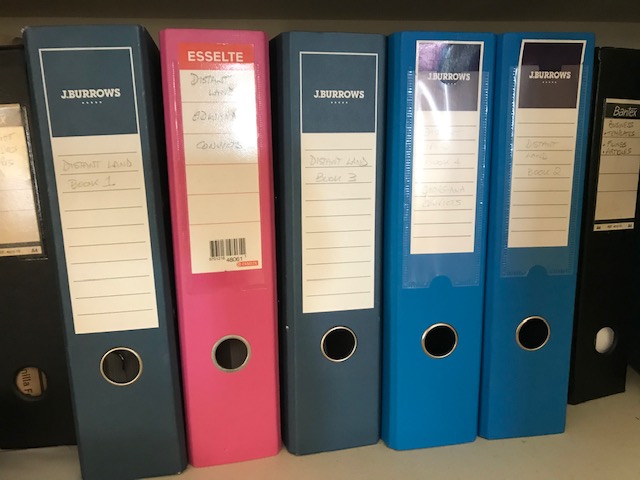(click on heading to leave comments at bottom of page)

It’s been a momentous couple of weeks with the ‘Black Lives Matter’ protests, the funeral of George Floyd as well as the continuing struggle against COVID-19. It makes you wonder if we have come far enough in the last 200 years although, looking over the inbuilt prejudices and inequities of life while Mary Ann and Robert Bright grew up, you have to grudgingly accept that the developed world has made progress (grudging in that we have more to do).
I started talking about Mary Ann’s story and how it unfolded during my research a few weeks back. It all started with some very basic information and the convict records at the Female Factory in Hobart.
Although I had some information on her date of birth and her baptism and also some information about her mother, digging deeper it was possible to build a more rounded picture. Given the time she was born, and the general location where she was born (Shoreditch/Spitalfields) plus the fact that her profession was described as a silk winder in the appeal against her conviction, it became possible to draw some conclusions.
At this time, Spitalfields was the centre of the silk weaving industry in England. There were thousands of people employed at this task, usually working in their own lodgings for a contractor. It wasn’t too great a leap of faith to assume that her father was employed in this trade, if not her mother too, and that the children would have helped.
There is also some confusion about her surname. She variously appears as Mary Ann Goulding, Goulden, Golding and Crocker. It’s easy to reconcile the Goulding/Goulden/Golding name as spelling was not exactly standardised at the time. And Golding is her mother’s maiden name. Her father’s name was William Crocker. Why she used her mother’s name when she was arrested is impossible to fathom unless, perhaps, they were separated by then or, maybe he was known to the police and she did not want to be tainted or vice versa. We will never know for sure.
Her mother was married twice at St Leonards church in Shoreditch (where Mary Ann was baptised) and, although it’s not possible to be certain, it looks like she married two brothers, the first in 1796 and, after he died, the second in 1809. St Leonard’s is famous for its bells, which appear in the traditional song, “Oranges and Lemons”. The church is still standing and well worth a visit; there is something very spiritual standing before the baptismal font, knowing that Mary Ann and her mother and father and probably her siblings stood on that very spot some 200 years earlier.
When Mary Ann was convicted, she described herself as a ‘nurse girl’, not a silk winder and she also stated that she had been living with another girl for six months away from her mother’s home. It was this information that made me believe that she had moved out of the family home in Shoreditch and taken up a new profession, probably in a hospital of some kind. Although I have no information to confirm it, I have placed her at St. George’s hospital on Hyde Park corner in the story, which was located not far from where she was arrested for stealing a clock (not a cloak as I had been told by a relative who had conducted earlier research).
The court records say that she was only 13 years of age when she was arrested but other records give the lie to this – especially her birth certificate which says she was born on 3 May, 1804 which means she would have been 19 years of age when she stood in the dock at Clerkenwell court.
She was convicted with Mary Wells and Elizabeth Diamond. All of them, understandably, protested that they had not stolen the clock but it is clear that it was Mary Ann who physically lifted it from the shop stall. I wondered as I began writing, who was the instigator? My initial assessment was that Mary Ann was more likely to have been encouraged by the other two, probably having made their acquaintance relatively recently during the six months that she had been staying with “another girl”. I assume that this other girl was either Mary or Elizabeth and I assumed it was Mary because Elizabeth was involved with her boyfriend.
However, when you look at the prison records of Mary and Elizabeth and compare them to Mary Ann’s, it is hard not to conclude that either Mary Ann developed a fighting streak or that she was the instigator because neither Mary’s, nor Elizabeth’s prison records show the dissent and fighting spirit displayed in Mary Ann’s record.
During the course of researching their lives and the events that happened around them, I built up a fairly substantial file of data – some of it electronic and some of it on paper. The picture at the heading of this note shows five files, all crammed full of data. I suppose I should really discard it to make room but somehow I know I won’t do that. There is too much of me tied up in it now.
Time to finish today. I have another embryonic file staring at me, urging me to continue writing my next book! I’ll finish these musings about Mary Ann over the next couple of months or so.
Keep safe.
The post Discovering Mary Ann first appeared on David Cairns of Finavon.